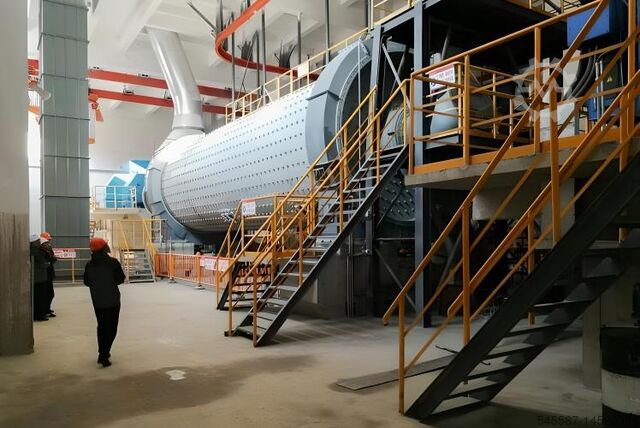Used Grinding Wheel Flange for sale (30,727)
 Wiefelstede
Wiefelstede Grinding wheels
CarborundumØ 505 / 65 mm
 Magdeburg
Magdeburg Grinding wheels, grinding stones
 Wiefelstede
Wiefelstede Grinding wheels
SeiffertØ 505 / 65 mm

+44 20 806 810 84
 Wiefelstede
Wiefelstede Grinding wheels
Naxos-UnionØ 500 / 50 mm
 Wiefelstede
Wiefelstede 189 grinding wheels
VerschiedeneDurchmesser 40 bis 300 mm
Discover more used machines
 Germany
Germany Attachment - Other
Wheel Wash SystemOktopus Stone 2 RU
 Medvode
Medvode Guide rail grinding machine
Grinding Machine
 Tipton
Tipton SURFACE GRINDING MACHINE
SURFACE GRINDING MACHINEFSG-1640 AD
 Zheng Zhou Shi
Zheng Zhou Shi Fine Powder Grinding Plant
Cement mill & Ultrafine Grinding MillFine Powder Grinding Plant
 Athina
Athina New surface grinding machine
SURFACE GRINDING MACHINE560 X 260
 Turkey
Turkey Crushing equipment
FABO BUCKET WHEEL WASHERFABO BUCKET WHEEL WASHER
 Zheng Zhou Shi
Zheng Zhou Shi Powder grinding machine
Fine powder grinding mill, clinker millSuperfine ball mill for micro powder
 Zheng Zhou Shi
Zheng Zhou Shi Grinding mill
Abrasive Aluminium Oxide Grinding PlantMicrosilica powder Grinding Mill
 Zheng Zhou Shi
Zheng Zhou Shi Cement mill,clinker grinding plant
Clinker grinding mill / cement ball millcement grinding with air classifier
 Zheng Zhou Shi
Zheng Zhou Shi Sand washing plant for silica sand
Wheel bucket / Spiral sand washerSilica / M sand washing machine
 Zheng Zhou Shi
Zheng Zhou Shi Roll forming line
Rod ball mill / Rod Grinding MillFor Sand and mining beneficiation plant
 Zheng Zhou Shi
Zheng Zhou Shi Roll forming line
ball grinding mill for mining &fine sandsilica/Barite/limestone powder plant
 Zheng Zhou Shi
Zheng Zhou Shi Mill / grinding mill
Batch Ball Mill, Silica grinding millQuartz ball mill, silica powder grinding
 Fulda
Fulda GoodYear tire production plant closure
Troester, Kobelco, CollmannMixer, Extruder, Building, Grinding
 Hessen
Hessen Cylindrical grinding machine
JUNKERJumat 6S 10-10
 Sachsen-Anhalt
Sachsen-Anhalt Profile grinding machine
Ziersch & BaltruschProfilmaster 40/100 CNC
 Hessen
Hessen Cylindrical grinding machine
JUNKERQuickpoint 3000/20
 Hessen
Hessen Centerless cylindrical grinding machine
JUNKERBBE 15 CNC
 Hessen
Hessen Surface grinding machine
REISHAUERAM
 Hessen
Hessen Gear grinding machine
REISHAUERRZ362A
Used Grinding Wheel Flange (30,727)
Search Machineseeker now with more than 200,000 used machines:Browse through the most popular machine descriptions:
This may be of interest to you

+44 20 806 810 84




























































































































































































































































